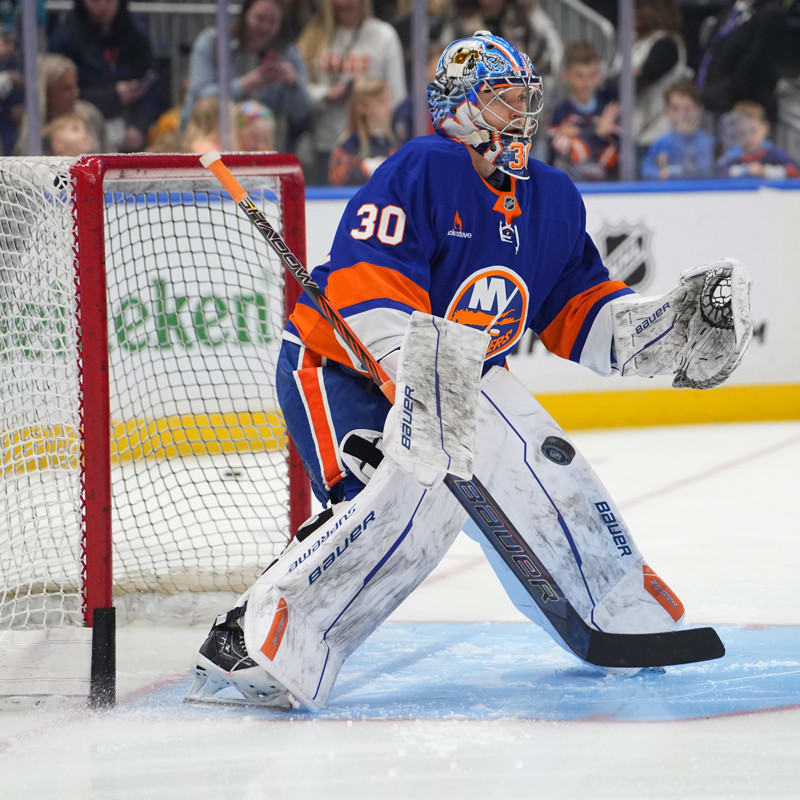If you're looking to participate in Yahoo! NHL DFS contests during the 2019-20 season, you can use this guide to help formulate effective lineups and get a leg up on your competition. Finding value is the key to success in daily contests, and value can be uncovered both by capitalizing on favorable matchups and targeting underpriced players. The strategies below will assist you in doing both of those things. However, before diving into these strategies, I'd recommend taking a minute to ensure that you understand the Yahoo! Daily Fantasy Hockey scoring system.
[Yahoo Daily Fantasy Hockey: Join a contest today]
Format-Specific Tips
The Yahoo! format has some intricacies that most other formats lack. Those include two-goalie lineups as well as rewarding the plus-minus category. Given the difference in scoring between a strong goaltending performance and a poor one, getting things right in net can make or break a lineup, but it's important not to commit too much of your team's salary to the goalie position while leaving the rest of your lineup to fight an uphill battle. While it makes sense to pay a premium for a top-notch option in single-goalie lineups, a more measured approach should yield the most success in Yahoo! contests. A good range for spending on the position is $60-65. That budget should allow you to grab an elite option in the mid-$30 range and supplement it with either a cheap netminder in a great matchup or an above-average goalie in a good one. In the same vein, the discrepancy in pricing between top goalies (well north of $30) and sparingly-used backups (often $20-$25) makes it important to take advantage of opportunities to deploy cheap options when they're taking on vulnerable opponents, especially with the buffer of another goalie spot to cover for an underwhelming performance.
Many other sites don't take plus-minus into account, but in Yahoo! contests, the category is rewarded with two fantasy points for each positive and penalized with minus-2 fantasy points for each negative. There's a significant amount of luck involved with the plus-minus statistic, which is amplified further in the single-game sample sizes of DFS contests, but that doesn't mean you can't put yourself in a good position to succeed in that category night in and night out. The way to maximize upside in the plus-minus category is obvious -- stack players from elite teams and/or in favorable matchups, as strong rating results will naturally follow their offensive production. This benefit extends to defensive-minded blueliners who log heavy minutes alongside talented forwards (more on that later).
There's also another angle to playing the plus-minus category -- minimizing downside risk. The key to doing this is avoiding exposure to high-scoring skaters from other teams. Due to the potential negatives of a poor defensive performance, playing both sides of the coin like you often see in football or basketball games with high over/unders isn't as effective in hockey, as the top forwards for each team often match up with each other, which means the rating benefits of an even-strength goal from one side are often canceled out by the rating drop on the other. Rating downside should also be in the forefront of your mind when choosing defensemen, as shutdown types who play big minutes will naturally spend the majority of their time defending against the opposition's top forwards, so it's best to deploy them against low-scoring opponents.
Stacks and Special Teams
Stacking is a household term in the DFS space. It involves picking multiple players from a single team to maximize a favorable matchup. While stacking even-strength linemates is intuitive and can help you maximize output in the rating category, there's also the power play to consider. Teams will often split up their most productive offensive stars between their top two lines in an effort to find balance at even strength, but those players will often share the ice while on the man advantage. Pittsburgh's Sidney Crosby and Evgeni Malkin are an example of this phenomenon, and Chicago's duo of Jonathan Toews and Patrick Kane often get the same treatment, too, even though one is a center and the other is a winger. While you won't get a plus-minus boost with the extra man, power-play points are rewarded with two fantasy points apiece, so stacking lethal man-advantage combos against struggling penalty-killing units is always a winning strategy.
High Ceiling Forwards, High Floor Defensemen
With a finite amount of salary to spend on lineups, it's up to you to decide which positions to pay up for and which to cut costs on. At one fantasy point per block, affordable stay-at-home defensemen such as Edmonton's Kris Russell (185 blocked shots in 72 games last season) can be a valuable tool in owners' repertoires, offering a steady floor at a low price while freeing up cap space to pursue elite difference-makers up front. Defensemen that can be relied upon to provide consistent offense are few and far between. Plus, they cost a premium. Those players are definitely worthwhile options under certain circumstances, but it often makes more sense to chase upside up front while locking in a guaranteed few points for cheap on the blue line, especially in 50/50s and Double Ups.
Play to the Contest
While there are general principles -- like exploiting favorable matchups -- that should be followed regardless of contest type, it's important to take a slightly different approach to Guaranteed Prize Pool Tournaments (which reward the high-scoring outliers at the top of the player pool with disproportionately top-heavy prizes) compared to Cash Games (Head-to-Head, 50/50s and Double Ups), which merely require you to defeat half or just over half of the other players in the contest to win. GPP contests require more of a high-risk, high-reward approach, which often means choosing cheaper goalies with a lower floor in order to spend big on skaters. Conversely, locking in the safety of multiple lower-variance, top-tier goalies while sacrificing some offensive output can help you do just enough to have success in Cash Games.







































